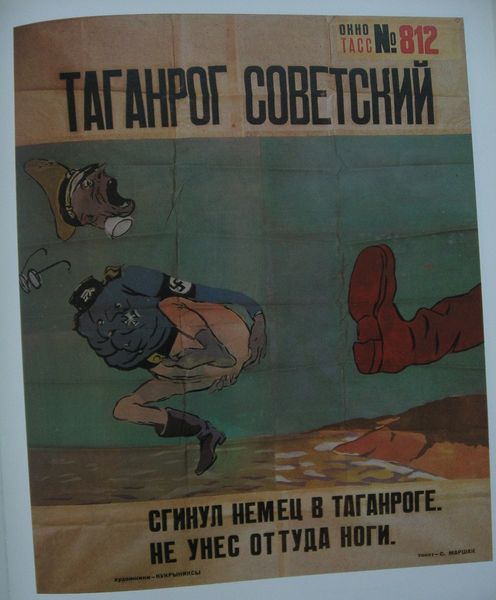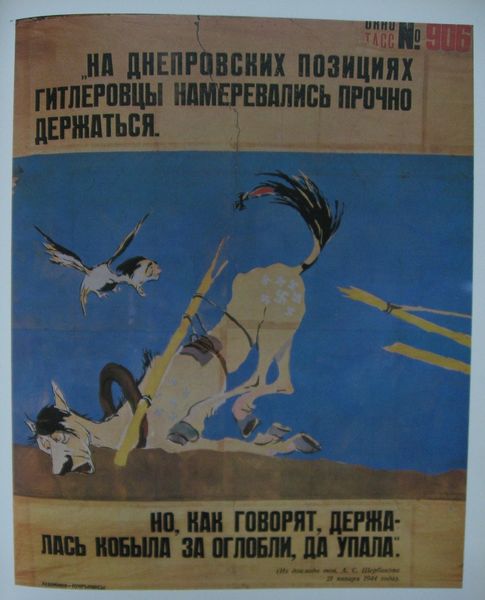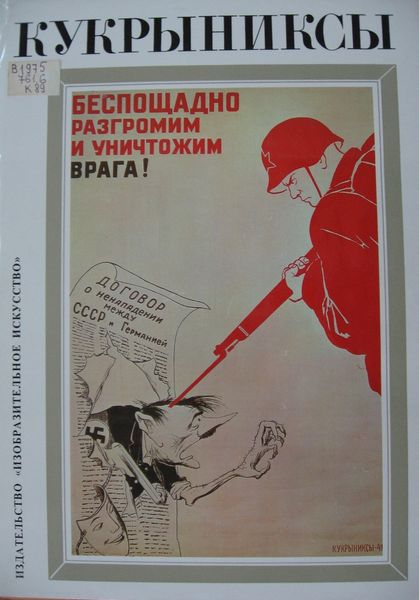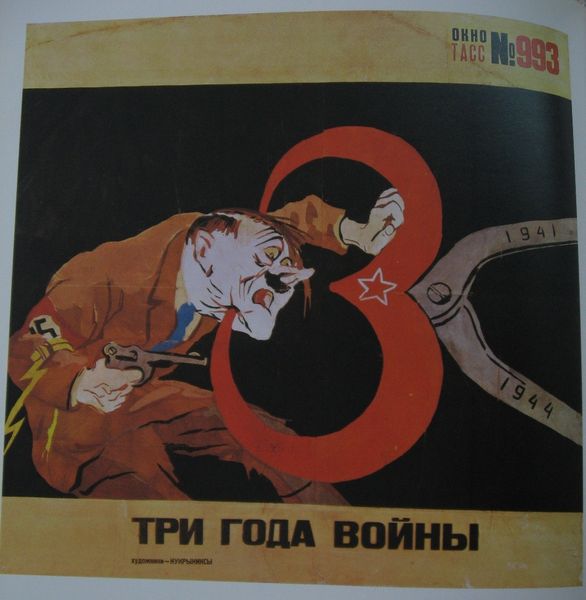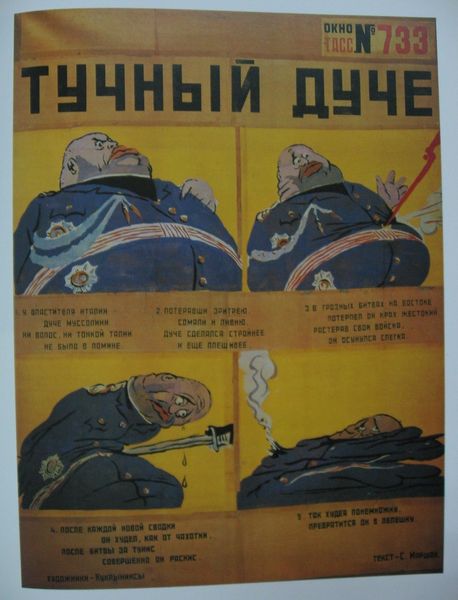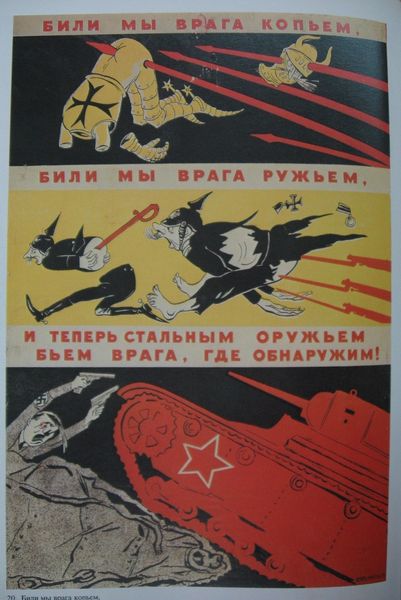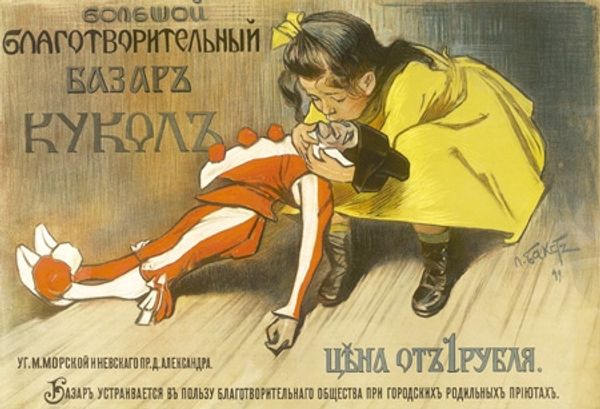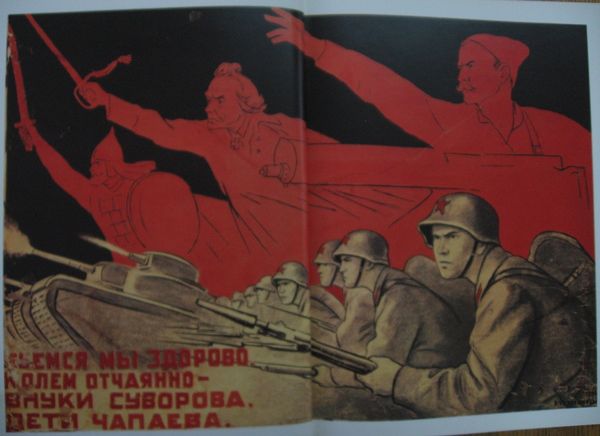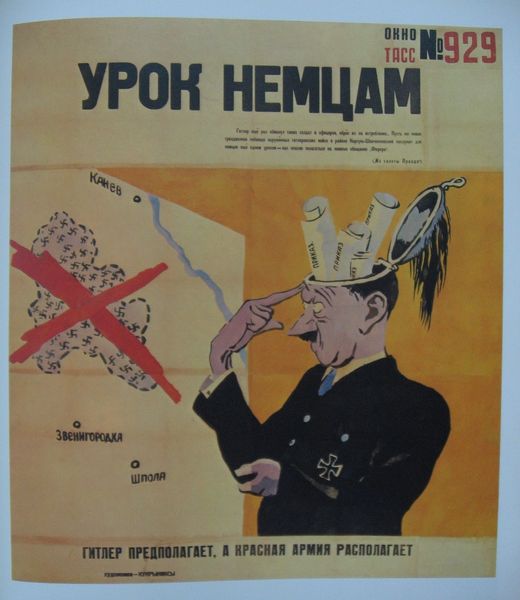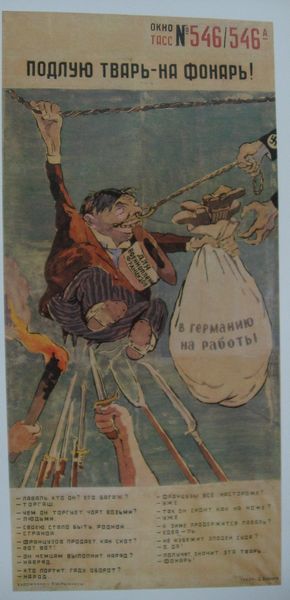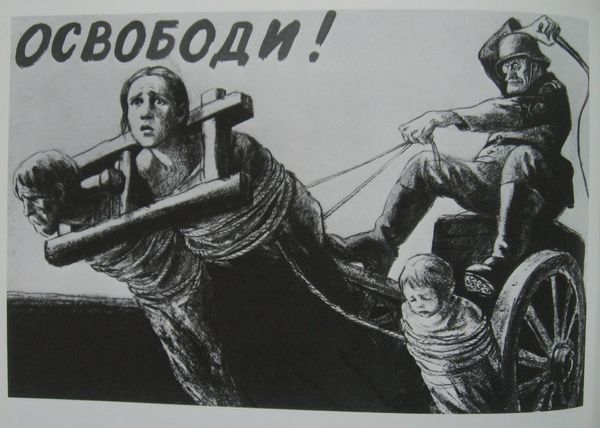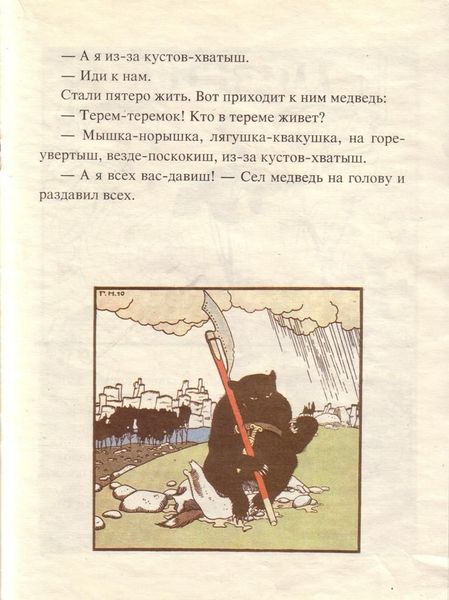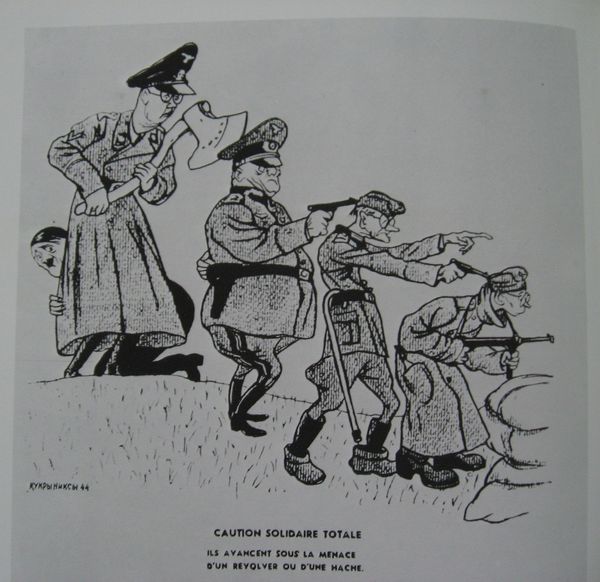
print, watercolor
#
portrait
# print
#
caricature
#
war
#
soviet-nonconformist-art
#
figuration
#
watercolor
#
famous-people
#
abstraction
#
history-painting
#
watercolor
Copyright: Kukryniksy,Fair Use
Curator: This striking caricature, "Krylov's Marmoset about Goebbels," was produced in 1944 by the collective known as Kukryniksy as part of the TASS Window series. These prints were rapidly produced and distributed to boost Soviet morale during World War II. What are your initial impressions? Editor: It's a chilling image, yet absurd. There's a forlorn quality in the marmoset’s posture, head in hands, contrasted with the crude, almost comical depiction of Goebbels within the frame. The palette, although muted, feels acidic, fueling the message of disdain. Curator: Precisely. The artists employ Krylov’s fable, where a monkey fails to recognize its reflection and criticizes it. In this instance, the marmoset disavows any resemblance to Goebbels, ridiculing his propaganda. This speaks volumes about the constructed nature of identity and how propaganda manipulates images and perceptions of reality. It directly critiques the Nazi regime's attempts to present themselves as a superior race. Editor: I see it operating on a few levels. The TASS Windows, displayed publicly, used visual language readily accessible to a diverse audience, particularly during wartime. Caricature was an incredibly effective tool to both inform and incite action, framing Goebbels and by extension, the Nazi project as ludicrous, weak, and pathetic. Curator: The collaborative nature of Kukryniksy is fascinating too. Their shared artistic voice speaks to a collectivist ethos deeply embedded within Soviet artistic practice, challenging notions of individual authorship so celebrated in the West. In their approach to war propaganda we see reflections of how gendered identities, national identity, and wartime anxieties were being constructed. Editor: Absolutely. It’s a testament to the power of art as a weapon. Consider how museums today contend with problematic historical narratives within their collections—examining works like this within their specific sociopolitical contexts allows for critical re-evaluation. This window acted almost as a declaration by Kukryniksy that their art serves as a kind of active tool for socio-political resistance. Curator: Reflecting on "Krylov's Marmoset," it prompts a deeper contemplation about visual manipulation and the enduring power of art in confronting oppression. Editor: Indeed. The caricature not only denounces its subject, but invites a wider critical examination of the societal forces at play in creating such figures in the first place.
Comments
No comments
Be the first to comment and join the conversation on the ultimate creative platform.
